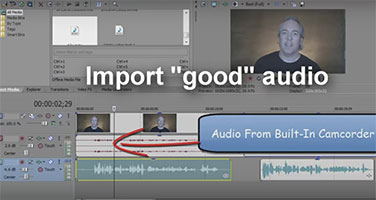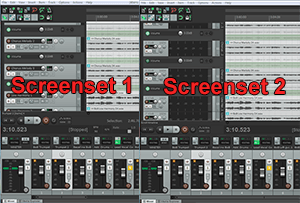 iKlip A/V – A complete mobile solution for professional audio and video recording with your smartphone.
iKlip A/V – A complete mobile solution for professional audio and video recording with your smartphone. is a smartphone broadcast mount that allows you to capture great sounding audio as well as the high quality video that most smart phones are capable of these days.
The audio is the piece of the puzzle where the quality of a video often falls down, so this is a step in the the direction of fixing that. I still feel that it’s important to get the mic close to the audio source. See (and hear) why in our article How To Get Good Audio On Your Videos.
A first in the industry with an integrated high-quality mic preamp with phantom power that lets you use a high quality external microphone for audio capture. There is an XLR port on the unit. The iKlip A/V also has built-in wireless receiver support.
This is a great mobile solution to ensure professional quality audio AND video recording using your very own smartphone. Just mount your phone onto the iKlip, plug your favorite microphone into the mic jack and start recording,
Read more about this here: http://www.ikmultimedia.com/products/iklipav/
Standard Order of Operations for Audio Post-Production
 Anyone doing a video project knows that audio can either make or break their projects. That’s why understanding the processes involved in audio post-production is super important. Avoid getting confused in the many stages of production by learning these step by step processes, understanding what happens in each step and finding the work flow that best suits you.
Anyone doing a video project knows that audio can either make or break their projects. That’s why understanding the processes involved in audio post-production is super important. Avoid getting confused in the many stages of production by learning these step by step processes, understanding what happens in each step and finding the work flow that best suits you.
Take a deeper look at each step having evolved through the years ensuring the quality of audio for movie and video productions. Whether working with a big team or doing small scale projects these steps will bring efficiency to your workplace.
Check out our own post (with video) – How To Get Good Audio On Your Videos – about how to make the narration on a talking-head (or any kind, really) video sound MUCH better than about 90 percent of videos out there.
Read more about this in the Audiotuts article here: http://photography.tutsplus.com/tutorials/understanding-the-phases-of-audio-post-production-for-video–cms-26688
Tips For Using Screensets In REAPER
 A “screenset” in Reaper is a customized arrangement of tools on a Reaper screen. If you want to change to something different from the default layout, you can do that and then save it as a screenset preset. For example, if you want to change the layout so that the tracks are vertical, or some other layout change that would help you in a certain kind of workflow, just rearrange the way the screen looks, then you can save that new screenset in a blink of an eye and then load that layout any time that you like. And you and create as many screensets as you want to.
A “screenset” in Reaper is a customized arrangement of tools on a Reaper screen. If you want to change to something different from the default layout, you can do that and then save it as a screenset preset. For example, if you want to change the layout so that the tracks are vertical, or some other layout change that would help you in a certain kind of workflow, just rearrange the way the screen looks, then you can save that new screenset in a blink of an eye and then load that layout any time that you like. And you and create as many screensets as you want to.
Watch the video from the Reaper Blog for more details… http://reaperblog.net/2016/05/how-to-use-screensets-in-reaper/
Getting Rid of Vocal Muddiness From Mixes
One of the common problem in mixes is vocal muddiness, and of course we want clarity on our vocals, and it’s really hard to achieve! Here’s a guide from Audio Issues that can really be helpful for you. Read here.
All About Harmonic Distortion
Harmonic distortion is the sound that is always there if we send our audio signal through any hardware processor of any kind. It might be subtle in some cases, but it will be there. Now that may seem like a bad thing – the whole emotional response to the word “distortion” and all. But there are lots of hardware devices – compressors, EQs, preamps, etc. – that imparted a desirable character to audio with its unique kind of harmonic distortion.
Then when everything went into computer-land, and it became more difficult or in some cases pointless to use hardware effects, getting those sought-after bits of audio character from popular hardware device-generated harmonic distortion became a problem.
But now that computer processing power is better and hardware simulation plugins (software that sounds like the origianal hardware – well as much as possible) are getting better, we can start to impart those “good” harmonic distortions to our digital recordings.
Here is an article about this from Nantho on Audio Fanzine: http://en.audiofanzine.com/recording-mixing/editorial/articles/getting-acquainted-with-harmonic-distortion.html